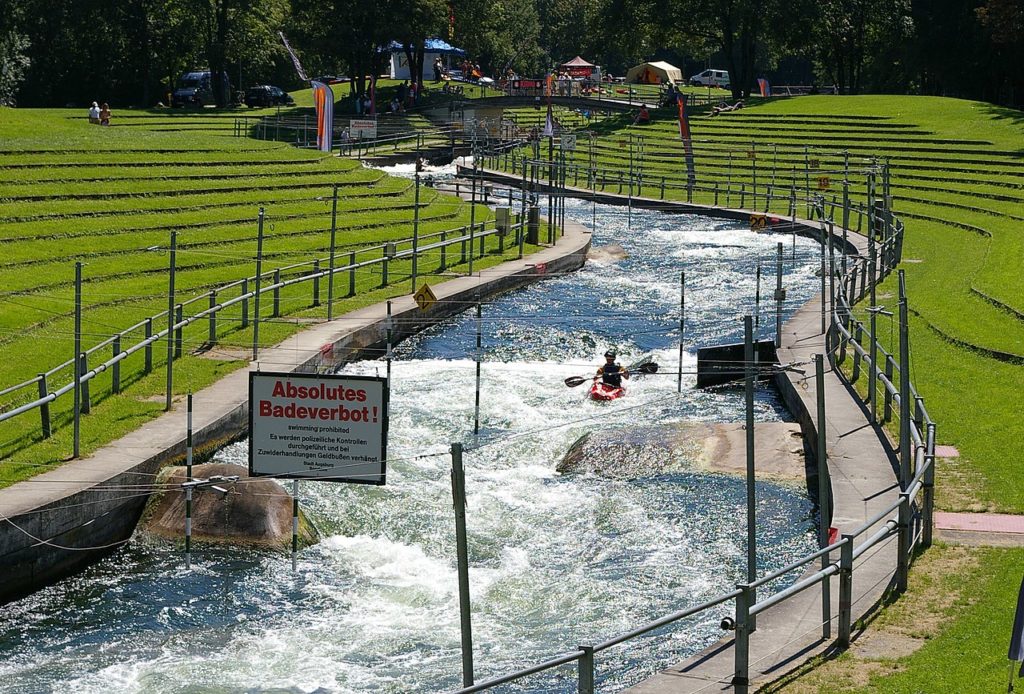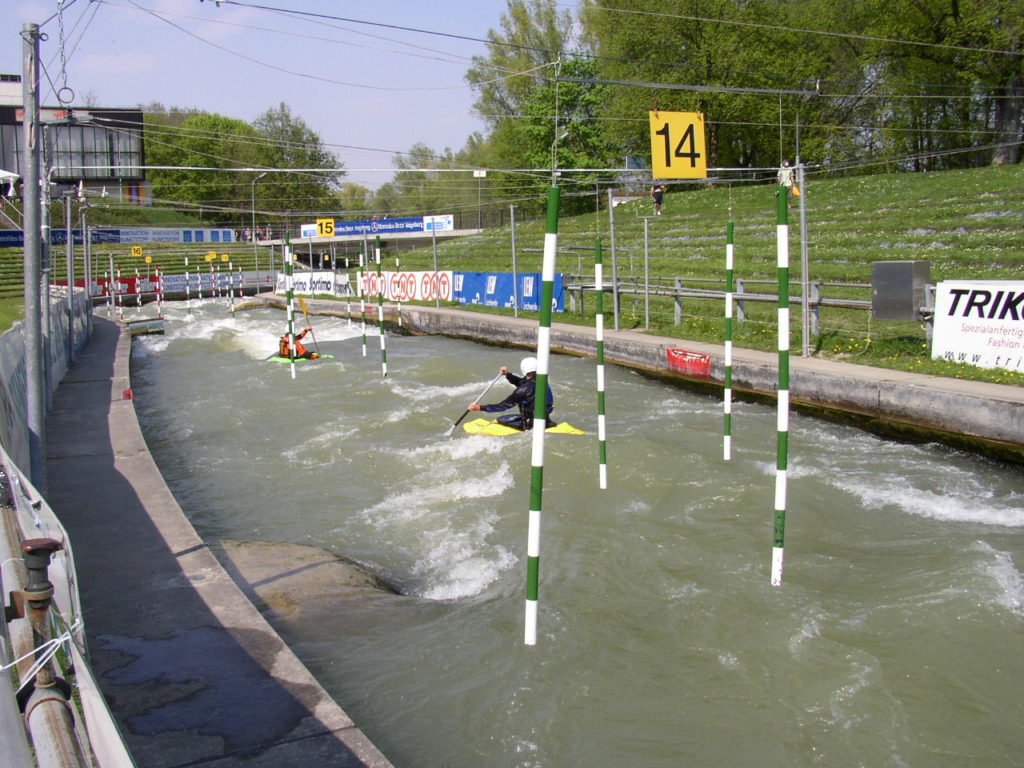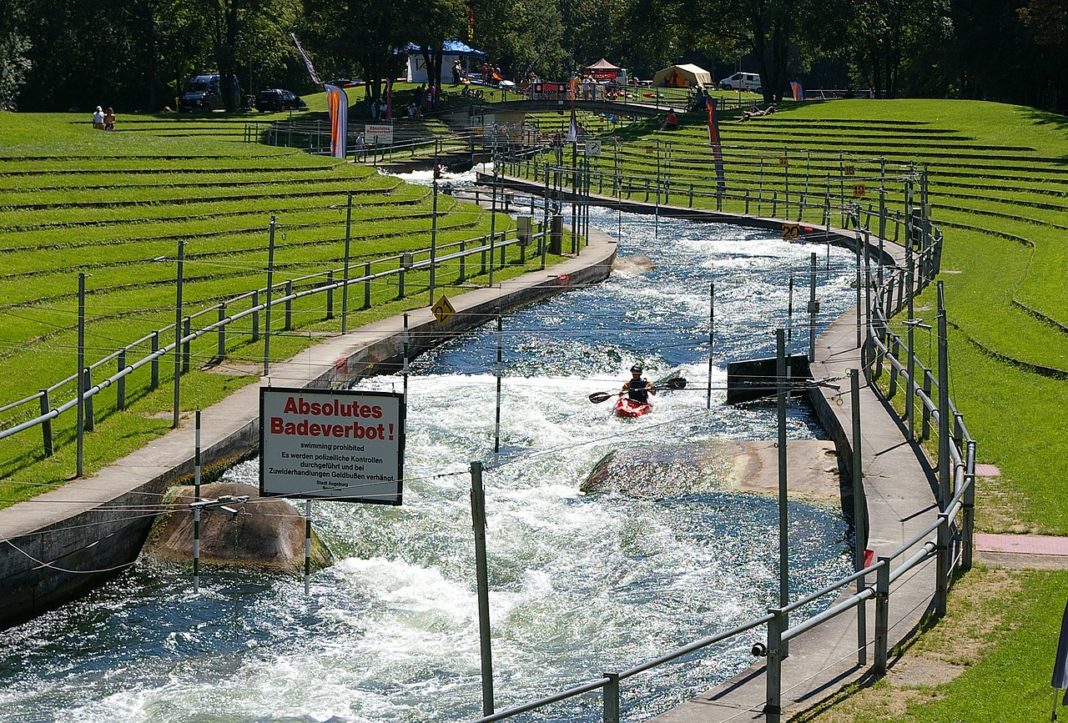Using a technique that has never been duplicated, the streambed of the Eiskanal canoe slalom channel was made of sculpted concrete, with simulated boulders being an integral part of the uneven channel floor. This feature is easily seen in photographs of the channel without water. The shapes were planned using water flowing through a 25-meter-long scale model made of sheet metal. Most of the simulated boulders are attached to the channel walls, but two stand alone in the middle of the channel. Five barn-door water deflectors, hinged to the channel sides, can be swung in or out to change the water flow at those locations.

As the first artificial whitewater course of its kind, it introduced the sport of canoe slalom (using decked canoes and kayaks) to the Olympic Games. However, because of the expense of building artificial rivers and supplying them with water, canoe slalom was missing from the next four Summer Olympics. It returned with the 1992 Olympic Games in Barcelona and has been featured in every Summer Olympics since then.

The Eiskanal has thus served as the prototype for six Olympic whitewater venues, from 1992 through 2012, and for more than fifty training and competition facilities in eighteen countries. Despite being the oldest, it is still one of the most widely used, hosting two World Championships and numerous World Cup races. It was a World Cup venue for all but four of the years 1990 through 2010, and it was so again in 2013 and 2014.

According to the Wikipedia














